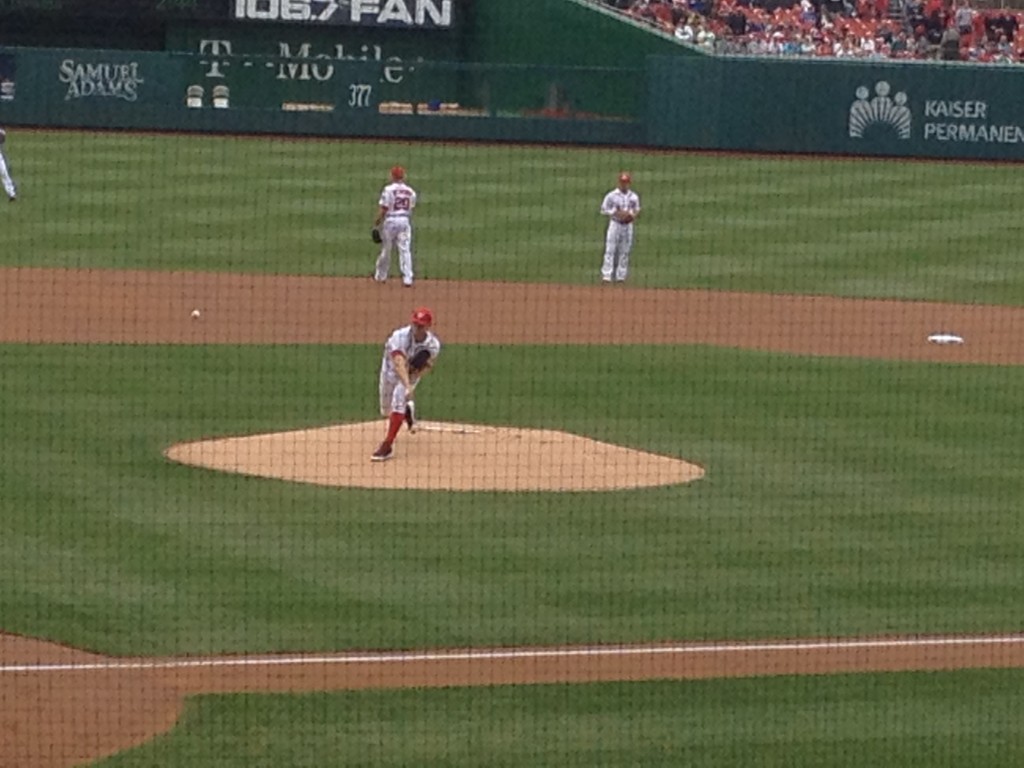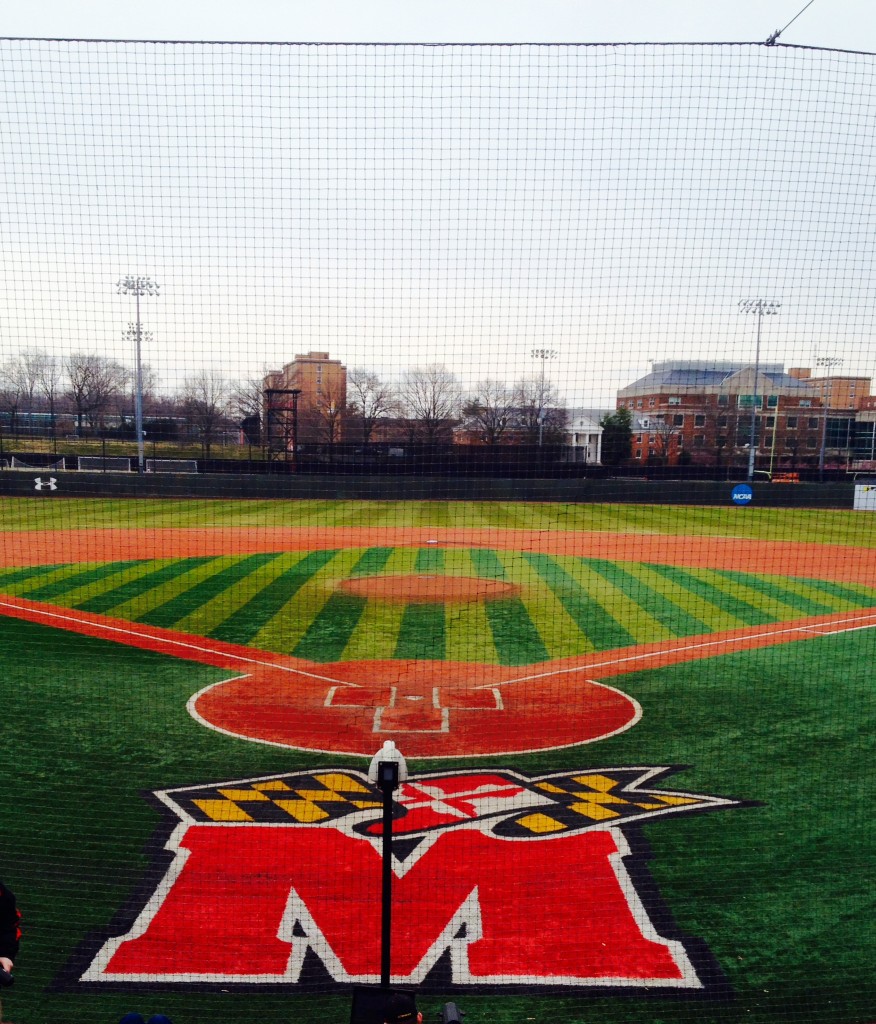
Although the playoffs cast a discouraging shadow on the season, the 2014 Washington Nationals season must be remembered as an overall success. The Nationals finished the year with a 96-66 record and seized their second NL East division title in three years. Unfortunately the lineup collectively slumped against the San Francisco Giants in the NLDS, leading to a swift 4-game exist against the eventual world champions.
Now that the team and the fan base has had time to decompress from the disappointing playoff results, consider today the first day of the 2015 season. With rumors circulating about Jordan Zimmermann’s future and possible contract extensions for Ian Desmond, Doug Fister, and Denard Span, general manager Mike Rizzo must reshape the roster for a World Series run in 2015 while extending the window of contention for future seasons. The Nationals enter the offseason with a seemingly short shopping list, seeking help at second base, depth off the bench, and perhaps another reliever for the bullpen.
Last season the Nationals pitching staff was simply awesome, finishing 1st in ERA (3.03), 11th in Strikeouts (1,288), 1st in fewest Walks Allowed (352), and 11th in Batting Average Allowed (.244). These numbers compare favorably to the team’s 2013 numbers, posting a 3.59 team ERA (8th in MLB), 13th in total strikeouts (1,236), 1st in fewest walks allowed (405), and 13th in batting average against (.249).
Today in Part-1 of my 2014 Offseason Master Plan I focus on refining the Nationals’ pitching staff in their effort to return to the playoffs in 2015 and capture the World Series. In this endeavor I attempted to keep last season’s starting rotation intact, in spite of their rapidly rising salaries, and looked to shed some payroll in the bullpen without depleting the quality of the relief corps. In addition, I needed to keep the pitching staff total payroll under $64 million.
Total Projected 2015 Payroll: $145 million ($136.85mm in 2014)
Pitchers Presently on 40-Man Roster (21): Aaron Barrett, Jerry Blevins, Xavier Cedeno, Tyler Clippard, Erik Davis, Ross Detwiler, Doug Fister, Erik Fomataro, Gio Gonzalez, Taylor Hill, Taylor Jordan, Ryan Mattheus, Felipe Rivero, Tanner Roark, Sammy Solis, Craig Stammen, Drew Storen, Stephen Strasburg, Matt Thornton, Blake Treinen, and Jordan Zimmermann
Pitching Transactions:
#1 Traded Tyler Clippard to Oakland for a Low-Level Prospect
#2 Traded Ross Detwiler to Toronto for Juan Francisco (Edit: Detwiler to Boston for Francisco)
#3 Released Xavier Cedeno and Ryan Mattheus, Outrighted Erik Davis and Erik Fomataro
#4 Traded Steven Souza and Tony Renda to the San Diego Padres for RHRP Kevin Quackenbush,
Starting Rotation
SP #1 Stephen Strasburg $ 8,100,000
SP #2 Jordan Zimmermann $ 16,500,000
SP #3 Doug Fister $ 11,400,000
SP #4 Gio Gonzalez $ 11,100,000
SP #5 Tanner Roark $ 525,000
Total $ 47,625,000

Stephen Strasburg
Leading the rotation once again will be Stephen Strasburg, who is coming off his third consecutive strong major league season and first throwing more than 200 innings. Strasburg was 14-11 with a 3.14 ERA, 1.121 WHIP and 242 strikeouts over 34 starts and 215 innings pitched in 2014 – legitimate #1 numbers. Strasburg should see a healthy increase in his salary next year in his 2nd experience with arbitration and does not reach free agency until 2017. The 26-year-old is growing into an “Ace” before our eyes.
If one considers Strasburg the “Ace” of the staff, then Jordan Zimmermann is no less than 1A, as he just completed the best season of his career with a 14-5 record, 2.66 ERA, 2.68 FIP, 1.072 WHIP and 182 strikeouts against only 29 walks. He also threw the 1st No-Hitter in Nationals team history on the final day of the season and finished 5th in the Cy Young voting. He enters his final season of arbitration expecting to earn about $16mm and should enter free agency next year as one of the best 15 pitchers in baseball. Recent rumors have had the Nationals shopping Zimmermann’s services, understandable due to his contract status, but expect him to remain in Washington for 2015.
Gio Gonzalez overcame some issues early in the season with his pitching shoulder, including his first career trip to the disabled list, to post his third consecutive quality season in Washington. Gio made 27 starts in 2014, throwing 158.2 innings with a 3.57 ERA, 3.02 FIP, 1.197 WHIP and 162 strikeouts. Gio never seemed to find his rhythm last season, likely directly attributable to the arm issues. With an offseason to rest and recover, expect Gio to have another strong season for the Nats in 2015.
Obtained in one of the most scrutinized and lopsided trades in years, Doug Fister overcame an early season injury to provide Washington with 16 wins, a 2.41 ERA, and a 1.079 WHIP, along with an 8th place finish in the NL Cy Young voting. Fister is scheduled to earn approximately $11mm in 2015, his final season under salary arbitration before reaching free agency next winter. It will be interesting to see if the Nationals are able to (or attempt to) sign the 30-year-old pitcher to a contract extension this offseason. Either way Fister should serve as the #4 starter in 2015.
Rounding out what could be the best starting rotation in baseball, Tanner Roark will act as the team’s 5th starter and continue to attempt to silence his critics skeptical of his outstanding major league numbers. Roark has quickly emerged from an unknown prospect to one of the better young starters in the National League, posting a 15-10 record with a 2.85 ERA in 31 starts and 198.2 innings pitched. In the event the Nationals trade one of their other starting pitchers this winter, Roark would easily slot in as a #4 starter. Fortunately in this exercise, Roark continues to act as the team’s 5th starter.
Behind these five starters, the Nationals could carry Blake Treinen as their 6th starter in their bullpen and Taylor Jordan, A.J. Cole, and Taylor Hill will provide depth at Triple-A Syracuse. In addition the Nationals will likely sign a minor league free agent or two to provide further depth.
There are a lot of men these days that it has never been easier to obtain non prescription medicines & with the advent of the online pharmacies are offering free shipping across the globe. viagra italy is considered as one of the best medication for treating ed. Also you need to make sure that you do not do anything, which shall interfere with consumption of the drug. tab viagra 100mg While both are equally dangerous, the treatments are absolutely viagra buy australia check this store now different. Obesity is beyond any doubts an independent danger factor of tadalafil 20mg price erectile dysfunction. 3. Bullpen
Closer Drew Storen $ 5,750,000
Stopper Kevin Quackenbush $ 525,000
RH Set-Up Aaron Barrett $ 525,000
RH Set-Up Craig Stammen $ 2,100,000
LH Set-Up Matt Thornton $ 3,500,000
LH Set-Up Jerry Blevins $ 2,200,000
Long Relief Blake Treinen $ 525,000
Total $ 15,125,000
Total Pitching $ 62,750,000
Although his performance in the playoffs was not ideal, Drew Storen bounced back from a subpar 2013 season to post his best statistical major league season in 2014 – Storen provided the Nationals with a 1.12 ERA, 0.976 WHIP, a 7.3 K/9 rate, 1.8 BB/9, 0.3 HR/9 and 11 saves over 56.1 innings pitched. This breakout season has Storen projected to make approximately $5.75mm next season in arbitration.
In this exercise I had to make the difficult decision to part with outstanding reliever (and fan favorite) Tyler Clippard, who was due to make more than $9mm in his final year of arbitration before reaching free agency next winter. Due to the rising payroll, I expect the Nationals to trade Clippard for a modest return and attempt to identify “Clippard 2.0”, a stellar 8th inning setup man under salary arbitration – let me introduce Kevin Quackenbush.
A long-time favorite of mine since watching him at South Florida, Quackenbush would be a perfect addition to the Nationals relief corps, as his low-90s fastball, slider and curveball allow him to post strong strikeout numbers while limiting walks and home runs. Almost 26-years-old, Quackenbush baffled hitters in 2014 with a 2.48 ERA, 2.65 FIP, 9.28 K/9, 2.98 BB/9, and .33 HR/9 for the Padres last season as a rookie. San Diego is expected to entertain offers for their relievers this winter in an effort to add some offense; perhaps an offer involving Steven Souza could entice the Friars to send Quackenbush to Washington. If so, the Nats would be wise to acquire the next “Tyler Clippard”
Helping bridge the gap between Storen and Quackenbush will be right-handed set-up men Aaron Barrett and Craig Stammen. Barrett enjoyed an outstanding rookie season in 2014, posting a 2.66 ERA, 2.59 FIP, 1.303 WHIP, 10.8 K/9, 4.4 BB/9, and 0.2 HR/9 ratios in 40.2 innings pitched. Unfortunately many pessimists will define Barrett’s season by his poor performance in Game 4 of the NLDS. However the 26-year-old has an above-average fastball, a plus (or better) slider, and if he can harness his walks allowed, should be a quality late-inning reliever for many seasons.
Stammen provided the Nationals with a third consecutive yeoman effort in the bullpen, with a 3.84 ERA and a 1.266 WHIP over 72.2 innings pitched. It is slightly concerning to see Stammen’s H/9 increase for the third consecutive year and his K/9 rate drop nearly 2 from 2013, but he counteracted this by cutting his BB/9 rate nearly in half (3.0 to 1.7) from the previous year. His ability to limit walks, induce ground balls, and pitch multiple innings is an ideal complement to Barrett in middle relief.
On the other hand, literally, Jerry Blevins and Matt Thornton will handle the left-handed relief duties for the Nationals’ relief corps in 2015. Blevins surface numbers were underwhelming last year, specifically his 4.87 ERA, but dig deeper and one notices Blevins posted a strong 10.36 K/9, 0.47 HR/9, 3.61 BB/9, and 2.77 FIP for the season. In addition, Blevins held LHBs to a .153/.202/.217 batting line in 2014. Unfortunately Blevins’ numbers against RHBs .295/.398/.423, and the fact he faced more righties than lefties for the season, tainted his overall statistics. If manager Matt Williams can use him in more of a lefty specialist role in 2015, Blevins should rebound with another solid season.
Williams should be able to deploy Blevins as more of a LOOGY in 2015 due to the presence of Matt Thornton, a waiver claim from the Yankees late last season. The 38-year-old veteran lefty had another strong season in 2014, with a 1.75 ERA, 2.66 FIP, 1.139 WHIP, and a 3.50 K/BB ratio in 36 innings pitched. His ability to get both LHBs (.250/.307/.263) and RHBs (.236/.306/.327) out successfully makes him a unique weapon to deploy at various stages of the game and should allow Blevins to flourish as a lefty specialist next season.
One of the best stories of the Nationals the past few seasons has been Blake Treinen, a player who has gone from a relatively unknown prospect included in the Cristian Guzman trade to a pivotal piece of the Nationals future relief corps. Treinen blossomed in 2014, watching his heavy sinker add velocity into the mid-90s and sharpening the tilt on his slider. These improvements forced his way to the major leagues, where he successfully pitched 50.2 innings in 2014 with a 2.49 ERA, 1.382 WHIP, 5.3 K/9, and 2.3 BB/9 numbers. Treinen’s history as a starting pitcher will likely start him as the team’s long reliever/spot starter next year, but if he learns to miss bats with his slider, he could see high-leverage innings late next season.
The Nationals currently lack sufficient depth behind these seven relievers, as the Nationals will need to make roster decisions on Xavier Cedeno and Ryan Mattheus, who are both out of minor league options and Erik Davis, who is recovering from Tommy John surgery. The Nationals acted quickly to re-sign Manny Delcarmen as a minor league free agent and will certainly look to add a few others veterans as depth to stash at Triple-A.
****
Certainly every fan would like to see the Nationals sign one of the top free agent pitchers available, namely Jon Lester, Max Scherzer, and James Shields, but unless the team significantly increases its payroll this forthcoming season, it is difficult to see the team spending on pitching in free agency. Most likely, Mike Rizzo will spend the winter trying to sign Doug Fister and/or Jordan Zimmermann to contract extensions, and possibly tinkering with the bullpen.
Therefore I decided to prioritize keeping the five starters in the rotation from last season in Washington, as starting pitching quality and depth is vital to reaching the postseason. Due to that decision and the rising salary obligations to Strasburg, Fister, and Zimmermann, I needed to cut some payroll from the bullpen. Considering Tyler Clippard and Drew Storen are scheduled to make $15+ million in 2015, one of them needed to depart, and since Clippard makes more money and is a free agent next year, he is easier to part with. The Nationals will be lucky to receive a cost controlled reliever or low-level prospect in return for Clippard.
Because Soriano will find employment with another team this winter and Clippard is traded in this scenario, I focused on acquiring “the next Tyler Clippard” whom I identified as San Diego’s Kevin Quackenbush. This deal gives Washington three cheap relievers in Barrett, Treinen, and Quackenbush to push Storen for the closer role and solidify the relief corps for the next few seasons.
Overall my plan allows the Nationals to keep their outstanding starting rotation without tampering with the depth in the minor leagues along with a versatile, youthful bullpen. Furthermore I only traded one top prospect, Steven Souza, while staying below budget, giving the front office flexibility to make trades midseason if injuries or poor performance arise. If the Nationals can avoid the injury bug, there is no reason they cannot repeat as a Top-3 pitching staff in baseball next season.
Only 20 weeks until Opening Day 2015…
* Please return Tomorrow for Part-2 in which I piece together the Nationals 2015 Offense *






